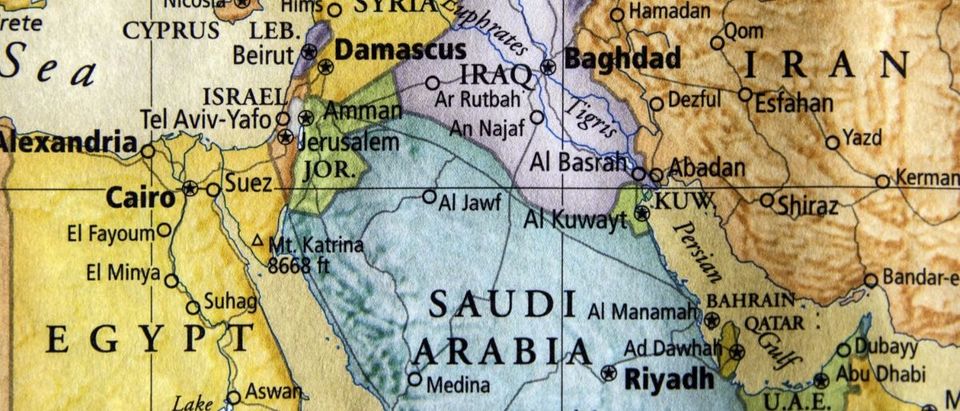The next war in the Middle East is brewing. Yet some policymakers and pundits are missing the buildup and, in some cases, missing the battle lines. Hezbollah, the Iranian-backed, Lebanese-based Shi’ite terror group is preparing to go to war with Israel — once again.
Hezbollah and Israel last fought a war in 2006. That conflict lasted 34 days and resulted in numerous deaths — many of them Israeli civilians either targeted by Hezbollah or Lebanese civilians used as “human shields” by the terror group. This double war crime is part of Hezbollah’s self-stated goal of destroying the Jewish state. And it will be a key component of Hezbollah’s strategy in the coming conflict.
A recent study by the High Level Military Group (HLMG), “Hizballah’s Terror Army: How to Prevent a Third Lebanon War,” highlights the terror group’s intentions. Formed in 2015, HLMG consists of military leaders and officials from NATO and other democratic countries exploring the challenges of warfare in the 21st century.
According to HLMG member Col. Richard Kemp, the former commander of British forces in Afghanistan, there is a “high probability” that Hezbollah will initiate another war. Hezbollah, Kemp said, knows that a future war would “necessarily result in extensive civilian casualties, especially in Southern Lebanon.” In fact, this is precisely what Hezbollah desires as “the group is counting on a high casualty count to turn the international community against Israel, recognizing that many governments automatically isolate and even vilify the country whenever it defends itself against enemy attacks.”
Lord Richard Dannatt, the British Army’s former chief of staff has pointed out that “the group has transformed most Shi’ite villages in southern Lebanon into assets that provide infrastructure, recruitment, storage and access to underground tunnels designed for warfare.”
The press frequently failed to note Hezbollah’s strategy of using human shields during the 2006 conflict. HLMG members have stated that a failure to be clear about this tactic is likely to further embolden Hezbollah, thus increasing the likelihood of war.
Hezbollah’s participation in the civil war in Syria, where it worked for its Iranian masters to shore up the rule of dictator Bashar al-Assad, has made the group battle-hardened and enhanced its fighting capabilities.
Dannatt notes that Hezbollah has “integrated a new armor support unit complete with modern tanks. It also has hundreds of unmanned aerial vehicles, advanced air defense systems, coast-to-sea cruise missiles and significant intelligence capabilities.” Hezbollah’s improved technological abilities are matched with an increased arsenal. The group has more than 100,000 rockets — 10 times as many as it had in the last war. Some of these weapons have advanced guidance and extended range which could allow them to hit major Israeli cities.
Hezbollah has an estimated 25,000 fighters — approximately 5,000 of whom have received advanced training in Iran — and 20,000 reserve operatives. The Shi’ite organization’s current stature has led the former chief of staff of the British Army to declare that Hezbollah can “carry out operations at the company or battalion level.”
In short: Hezbollah is more of an army than an ad-hoc terror group. And the population of southern Lebanon is at its disposal, as well as elements of the Lebanese Armed Forces (LAF).
Some observers have sought to obfuscate on the Lebanese government’s cooperation with Hezbollah. A July 25, 2017 Washington Post Op-Ed by Beirut-based journalism professor Nora Boustany and writer Daniel Williams presented the country as “beleaguered” and facing a threat from a “bellicose” Israel. Lebanon, they claimed, was merely caught between Hezbollah and the Jewish state.
A recent commentary in The Hill, while detailing Hezbollah’s military buildup within Lebanon’s borders — and the damage a future war would bring — suggested that the LAF “has proven to be credible and independent.” Although the article correctly identified Iran as pulling Hezbollah’s strings, it omitted worrying instances of collaboration between the terror group and the U.S.-funded LAF.
U.S. support for the LAF is predicated on the successful implementation of United Nations Security Council Resolutions 1559 and 1701, which, among other things, call for all militias in Lebanon to be disarmed. Not only has Hezbollah not disarmed, but it also has been supported by the Lebanese state in flaunting these U.N.S.C. resolutions.
Lebanon’s president and commander-in-chief, Michel Aoun, was correctly described as a “Hezbollah ally” by The Washington Post when he took office in October 2016. In a Feb. 12, 2016 interview with Egypt’s CBC, Aoun said that Hezbollah’s “arms are not contrary to the state project; otherwise we could have not tolerated it. It is an essential part of Lebanon’s defense.” He even described Hezbollah as a “complement” to the LAF. Indeed, on Nov. 4, 2017, Lebanese Prime Minister Saad Hariri — decrying Iran’s influence in the country — resigned.
Tony Badran, an analyst of Lebanese politics with the Foundation for the Defense of Democracies, has pointed out that the LAF has even conducted joint operations with Hezbollah — and had the audacity to do so while then-Lebanese Prime Minister Saad Hariri was visiting the U.S. in July 2016, seeking military aid for his/Hezbollah’s country. Hezbollah head Hassan Nasrallah has even announced joint operations between the LAF and the terror group — responsible for murdering more Americans than any other save al-Qaeda — before they occur.
Nasrallah routinely threatens the United States and calls for Israel’s destruction. Yet, members of his terror group sit in Lebanon’s parliament and hold cabinet ministries.
The next war in the Middle East is taking shape. Hezbollah, an appendage of Tehran, is armed to the teeth and, from behind human shields and LAF components, taking aim at the Jewish state.
Sean Durns is a Washington D.C.-based foreign affairs analyst. His views are his own.


